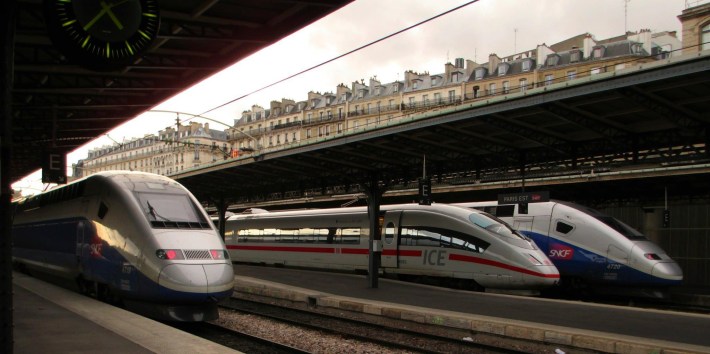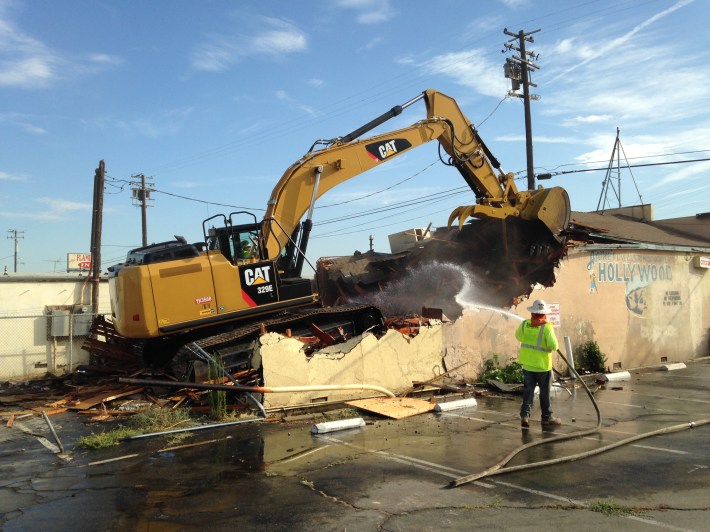Appeals Court Lifts Bond Restrictions on CAHSR, Funding Picture Clears
3:01 PM PDT on August 1, 2014

A California Court of Appeals has removed the most significant legal impediment threatening California’s High Speed Rail project. The unanimous decision of the three-judge panel, rendered on Thursday, reversed Judge Michael Kenny’s Nov. 25, 2013 ruling, which had blocked the state from issuing bonds under Prop. 1A, the High Speed Rail Act of 2008.

Justice Vance Ray, the presiding justice on the Third District of the California Courts of Appeal, writes that Kenny overstepped by injecting the judiciary into the role of the legislature.
While Proposition 1A authorized the state to issue $9.95 billion worth of bonds, the legislature had to approve them based on an evaluation of the project and its business plan. An extensive debate took place in the California Assembly and Senate and the issuance was approved in 2012. It passed in the State Senate with no votes to spare.
So everything appeared to be moving smoothly until Kenny's decision last year which seemed to imperil the High Speed Rail project. Yesterday's ruling paved the ground for the project to continue planning and construction as enough funds to complete the route are sought.
The appeals court agreed with the California Attorney General’s argument that Judge Kenny’s decision last year “...jeopardizes the financing of public infrastructure throughout the state by interfering with the Legislature's exercise of its appropriation authority, invents judicial remedies where none are provided by law, and subverts the very purpose of the validation statutes.”
“Moreover,” adds the court, “such an intrusive standard would offend the fundamental separation of powers between the legislative and judicial branches of government.”
A former deputy Attorney General and expert on state legal proceedings who spoke to Streetsblog on anonymity said that the appellate decision is intentionally detailed and long. “They want to put an end to this nonsense,” he said, referring to the court’s desire to stop future legal proceedings from delaying the project.
Of course, there are plenty of High Speed Rail opponents who were unhappy with the ruling.
“Justices lowered the bar for agencies to provide evidence of need for funding,” said Aaron Fukuda, a party in the case and co-chairman of Citizens for California High Speed Rail Accountability, a Kings County-based group. “Essentially the Authority could have written on a post-it ‘give me money’ and that is good enough.”
Citizens for High Speed Rail Accountability claimed in their suit that changes in the project, both in cost and estimated speed of the finished rail line, invalidated the voters decision to partially fund the project in 2008.
Funding Picture Clears, But Isn't Complete
Last November, after the initial court ruling, the San Francisco Chronicle ran the headline “California High-Speed rail Plans Stopped in Tracks.”
This was a fairly typical interpretation, even though the Authority still had $3.4 billion available from Federal sources. However, that money required matching funds or it would eventually have to be paid back from California’s general fund. Last June the state set aside $250 million in cap-and-trade funds for high-speed trains. With this appellate decision, the Authority can now match the federal contribution and it has an ongoing revenue stream from cap-and-trade.
Could the appellate decision go to the California Supreme Court? “They generally hear cases where there is a conflict in the district court--which this is not--or if there’s broad societal importance or death penalty cases,” said the former Deputy Attorney General.
Members of the California High Speed Rail board were, of course, ebullient. Chairman Dan Richard said the court validated that they are doing “...precisely as the voters called for when they passed Proposition 1A.”
Construction is underway in the Central Valley, including structural testing and demolition work over a 29-mile stretch from Madera to Fresno. The vacant Annie's Hollywood Inn bar on Fresno's Golden State Boulevard was demolished on July 14, as seen in the accompanying photo. Contractor Tutor-Perini/Zachry/Parsons is load testing structures that will become part of the train alignment.
This prep work will go towards a 180-mile Central Valley spine. The California High Speed Rail Authority is now focusing planning efforts on a segment from Palmdale to Los Angeles. The build-out of the project, from Los Angeles to San Francisco, is expected to cost $68 billion and take some 15 years to complete. To put that in perspective, Caltrans will spend over $200 billion over the same period...mostly on highway expansion and fix-it projects.
By 2029 California High Speed Rail will run from San Francisco to the Los Angeles basin in under three hours at speeds capable of over 200 miles per hour. The system will eventually extend to Sacramento and San Diego, totaling 800 miles with up to 24 stations.
Stay in touch
Sign up for our free newsletter
More from Streetsblog Los Angeles
Automated Enforcement Coming Soon to a Bus Lane Near You
Metro is already installing on-bus cameras. Soon comes testing, outreach, then warning tickets. Wilshire/5th/6th and La Brea will be the first bus routes in the bus lane enforcement program.
Metro Looks to Approve Torrance C Line Extension Alignment
Selecting the relatively low-cost hybrid alternative should help the oft-delayed South Bay C Line extension move a step closer to reality




